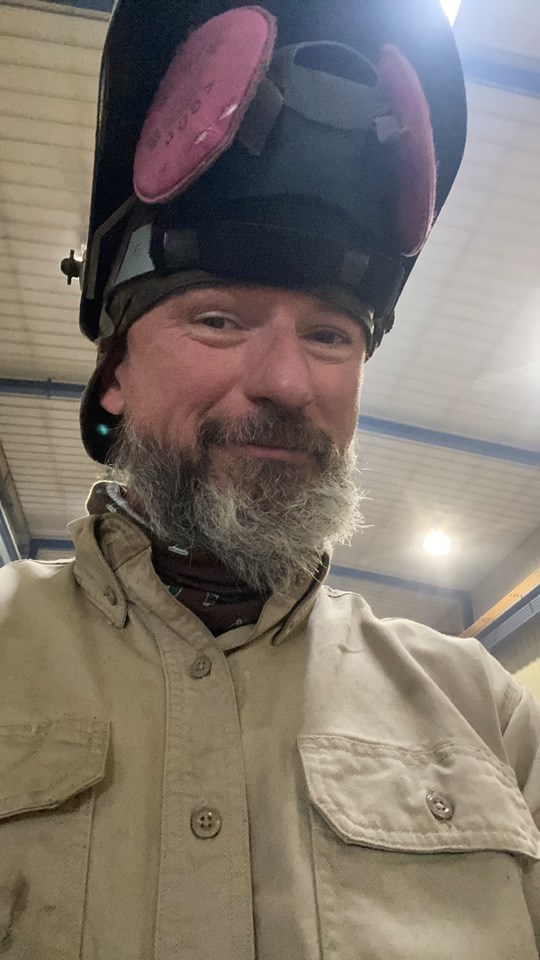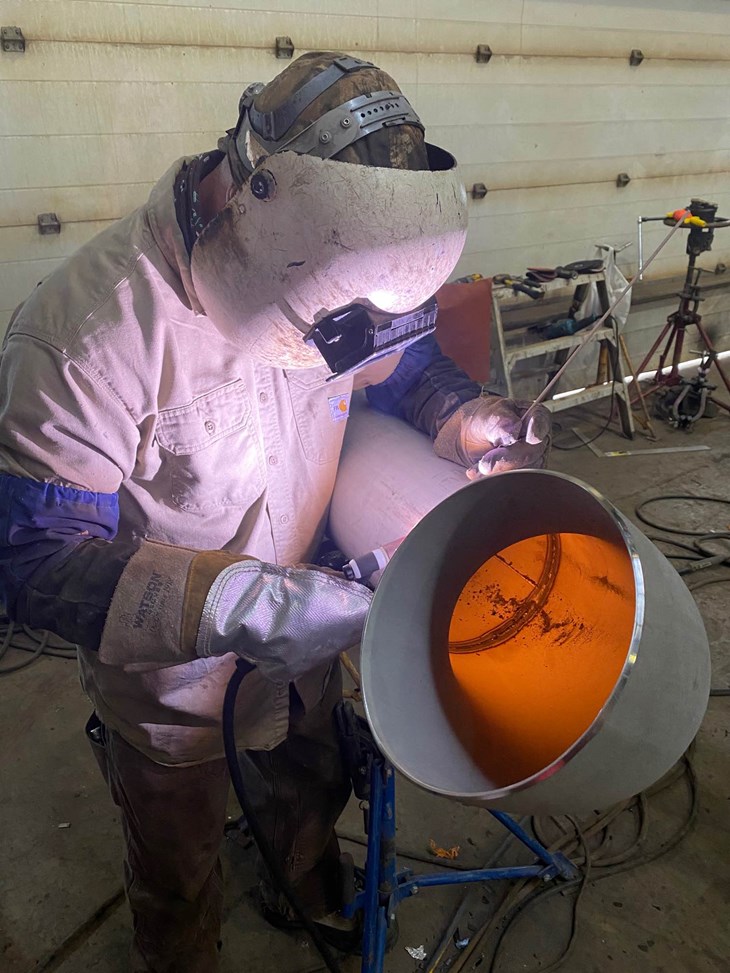Gerry Gobert did not always know that he would be a welder. When he was in high school, Gobert was interested in becoming a heavy-duty mechanic; through a twist of fate and a connection through his cousin, he ended up working in the welding industry. “I started out in an apprenticeship and moved up through the ranks as an ironworker. I wanted to take things a step further and get into pressure welding, and that is where I found my niche working with exotic alloys and CRAs (corrosion resistant alloys). They became my bread and butter over the years,” says Gobert. “I became a stainless steel welder as soon as I could, and it has been one of the things that has driven me throughout my career.”
Gobert is a CWB Level 1 welding Inspector, a certified pressure welder, and is working towards his API 1169 certification for pipeline inspection. “A large part of my work is keeping my performance qualifications up to date, so that I can perform any type of weld that is needed for a project. I pride myself on the certifications and qualifications I have in my skillset,” he relays.
Gobert is typically contracted for a range of different projects. “Due to COVID, the industry has obviously changed, but I am used to working 14 days on, followed by seven days off, or 21 days on, and four days off. It depends on what is required of the particular job, whether it is a shutdown of an existing plant, or a new construction project,” he explains. “A new construction project usually has more flexibility with time, so they are a little more lenient as they do not want to overwork their people; a shutdown has a more compressed schedule because they want to get things up and running quickly, which means I am working more days in a row.”
Gobert enjoys the variation in his work. With his wide skillset, he is able to switch things up for what is required in each project, and it keeps him on his toes. Gobert says, “With welding, you need to use your skills, or you will lose them. These skills come into play with all certifications required for different alloys – they all weld differently, and you have to work at it constantly to make sure you do it properly and maintain your knowledge.”

Welding a variety of materials
As a welder, Gobert has had the opportunity to work with a range of metals, including Inconel, Monel, nickel alloys of various percentages, titanium, chrome, and molybdenum (moly), among others.
With the variety of materials Gobert has worked with in the oil and gas industry, he knows that each comes with a different set of characteristics, and each has a specific set of requirements for welding. “Welding different alloys is like a balancing game,” says Gobert. “The difference between the alloys could be the fluidity of the molten puddle as you are manipulating the rod and the base metal, or the parent metal itself.” Another difference could be the heat input that each alloy can handle. If there is too much heat on stainless steel, for example, the nickel comes out of it and it propagates. This in turn will cause it to lose its ability to resist corrosion.
Gobert continues, “When welding, you really need to pay close attention to the parameters that must be met for each alloy. When it comes down to it, you either know how to work with the alloys, or you do not. You need to be able to fix any mistakes that occur, or make adjustments, to make sure the welds do not fail. Exotic alloys are the cream of the crop, and we need to make sure those working with them are highly trained.”
Contracts and projects
Over the years, Gobert has worked on many projects in corrosive environments. He says, “Working in the oil and gas industry, you are working with materials that must handle corrosive substances, such as acids, gases, hydrogen sulfide (H2S), and other harsh mediums. Discharge on an H2S gas plant can be upwards of 70%+ H2S, which is highly corrosive. Sulfuric acid is common in the industry as well as nitric, hydrochloric, hydrofluoric, and other acids that are used as base chemicals for the production of a diverse range of polymers, fertilizers and other specialty chemicals. Caustics, as well, in the production of pulp and paper, require the employ of alloyed containment, such as sodium hydroxide and sodium hydrosulfide.”
Each material has its own specific characteristics relative to functional corrosion/abrasion resistance including hardness, malleability, ductility etc. There is no one material better than another, as each has its own strengths and weaknesses. Some of those idiosyncrasies include the physical/chemical composition, but another that plays a major role is budget.
One of Gobert’s toughest welding projects included welding 36 inch pipe consisting of Moly 6 without any prior interfacing with the alloy. It was very difficult to maintain a consistent purge, although when all was said and done the welds passed X-ray with flying colours. “There were a lot of alloys for this project, and they were incredibly difficult to deal with. It was very challenging, but it was a wonderful job, and it was worth it,” he relays.

Closing the knowledge gap
Hopes for the future
Gerry Gobert can see the welding industry changing a lot in the near future. “There is a lot of automation happening in the industry, and we might even get to a point where robots are doing the welding for us. However, there will always be a lot of applications where the welding will need to be done manually,” he says. “Nothing can out-perform a highly qualified human being, with the ability to make adjustments on-the-fly.”
Gobert also hopes that changes are made in the industry to protect the environment from the fumes and gases that come from welding procedures. He continues, “In a way, our job does contaminate the environment, and it is something we can improve on—it could be as simple as reducing the amount of gas we use during a welding procedure.”

